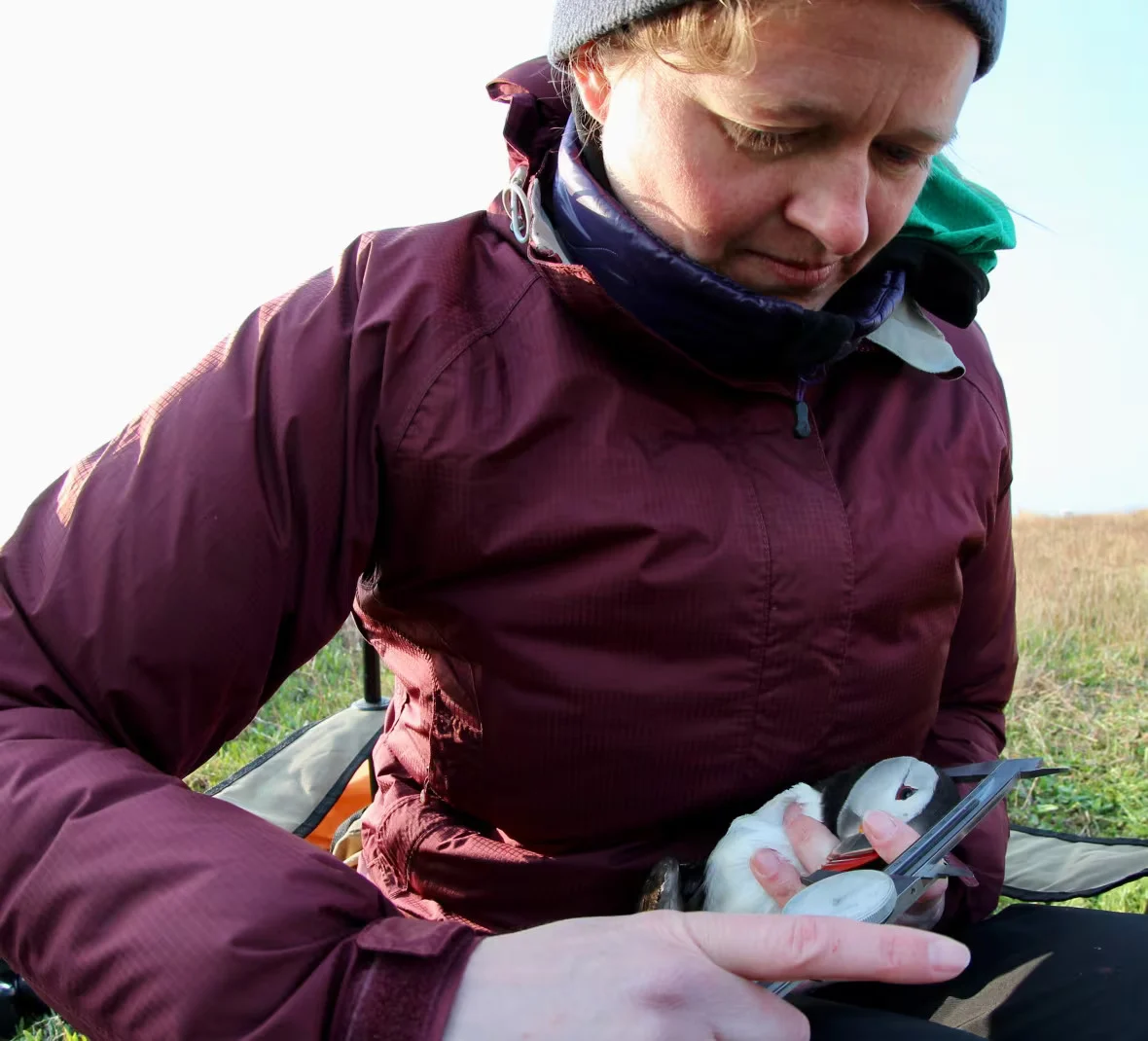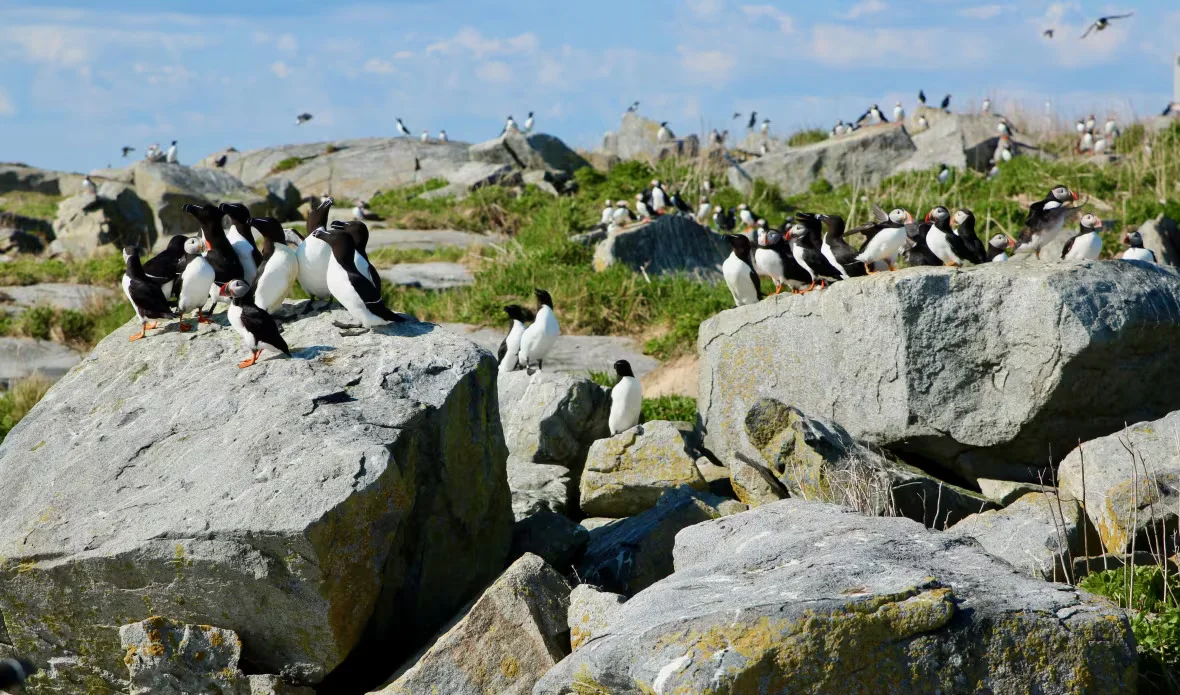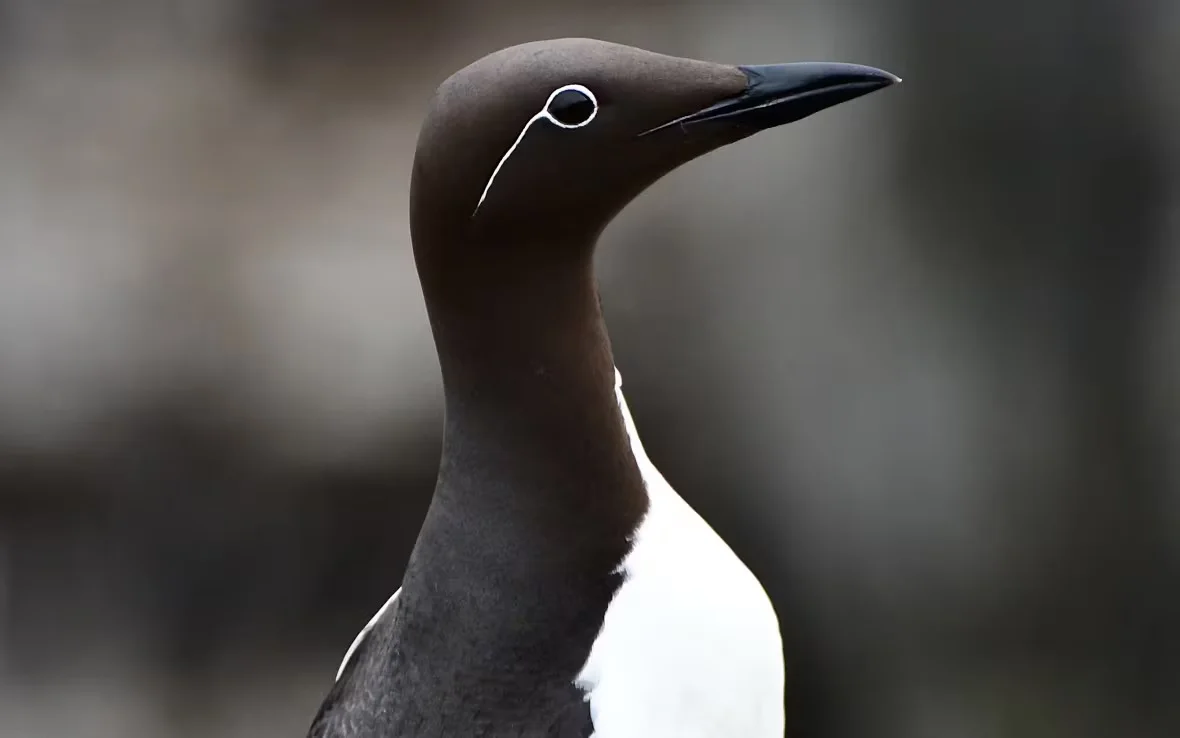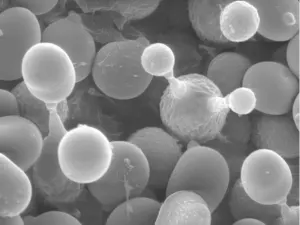
Warming waters cause concern for Atlantic puffins, other seabirds
While extreme heat might cause discomfort for those of us on land, New Brunswick researchers are getting concerned about the effect of heat waves on seabird populations as well.
Heather Major, a marine biology professor at the University of New Brunswick, said the first big marine heat wave in her research area, around Machias Seal Island, was in 2012 and they have been continuing ever since.
"There have been small breaks, but it's essentially been really hot in the Gulf of Maine for a long time now," she said.
Marine heat waves occur when water temperatures exceed the 90th percentile of what they should be for that time of year in a given area for five days or more, according to Peter Galbraith, a research scientist with Fisheries and Oceans Canada.

Marine biology professor Heather Major has been involved with a long-term monitoring program of six different seabird species on Machias Seal Island. She is seen here holding an Atlantic puffin, one of the six species. (Submitted by Heather Major)
He said when temperatures meet that definition, it is a moderate marine heat wave, which isn't rare. But there are different categories of marine heat waves, including strong, severe and extreme classifications, each rarer than the one before it.
Galbraith said in the last three years, there have been more and more marine heat waves, with some even reaching the extreme classification. The Gulf of St. Lawrence, he said, has been in a marine heat wave since April.
"In certain areas of the Gulf, we're sort of off the charts of what the temperatures we'd expect even for the maximum of the season," said Galbraith.
Changes to Atlantic puffins
Major said there is a long-term monitoring program of six different seabird species on Machias Seal Island — which is southwest of Grand Manan between the Gulf of Maine and the Bay of Fundy — that has been ongoing since 1995, which means there's high-quality data that shows how marine heat waves are impacting the populations.
There are a few noticeable changes, she said. One of the species, Atlantic puffins, are now breeding around two weeks later than they were in the 1990s. So they are coming to the island later but they are leaving at the same time in mid-August.

A puffin colony seen on Machias Seal Island, an island southwest of Grand Manan between the Gulf of Maine and the Bay of Fundy. (Submitted by Heather Major)
And on top of a later breeding season, the reproductive success in the years following big marine heat waves has been low. For example, she said 2013 was a bad year, as was 2021 — the lowest reproductive success year on record.
"That's really the biggest metric we have right now, is that we're seeing these crashes in reproductive success in some years and it's really because the chicks themselves are dying," said Major, adding that despite this, the puffin population has remained stable for the time being.
"So they're hatching at almost a normal rate, but about midway through the season, they all start to die, and it seems to be because there's no food for them to eat."
Major said she has also noticed that recently, puffins have been getting smaller and using their large bills to regulate their body temperature.
RELATED: How sharks sense 'bad' weather coming, and where they go to hide
Kelsey Butler, the director of Birds Canada's Atlantic and Quebec regions, said seabirds feed at the surface of the ocean, and if the fish or organisms that they need aren't on the surface because of the heat, the birds may try to go further and tire themselves out.
Butler said seabirds with not very flexible diets are most affected by warming sea temperature. These birds can include Leach's storm petrels, common murres, shearwaters and Atlantic puffins.

Common murre, among some other seabirds, have a specific diet, which Butler said makes them more affected by the warming sea temperatures. (Submitted by Paul O'Toole)
If temperatures continue to rise, Butler said some species might be able to adapt while others may not. Seagulls, for example, have a flexible diet and may have more of an ability to adapt, although it will depend on the rate of climate change, she said.
"Seabirds are pretty resilient … and so one event isn't going to decimate a population, but it's like when you think about the floods we've had here in Fredericton — one flood we can rebound from, but if they continue to happen, it's going to be harder and harder," Butler said.
"So if things keep going as they're going, it doesn't look great."
This article written by Hannah Rudderham was published for CBC News.









